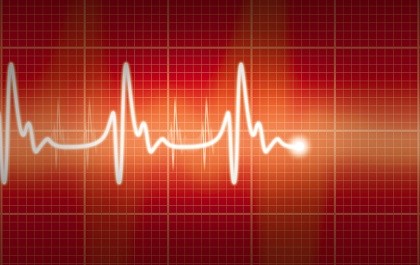E-cigarettes and marijuana have similar harmful effects on the heart as those of tobacco cigarettes –opening the door to abnormal heart rhythms, reports a team of researchers at UC San Francisco.
"We found that cigarettes, e-cigarettes, and marijuana greatly interfere with the electrical activity, structure, and neural regulation of the heart,” said lead author Huiliang Qiu, MD, PhD, a postdoctoral scholar in the UCSF Division of Cardiology. “Often, any single change can lead to arrhythmia disease. Unfortunately, these adverse effects on the heart are quite comprehensive."
In order for the heart to work well, it must pump blood efficiently and with correct timing. The heart has its own electrical control system resulting from nerves that control it. It also has the ability of electrical impulses to move through the heart muscle in a way that synchronizes the entire heart to correctly time the pumping. If parts of the heart don’t correctly handle the electrical signals, then different regions of the heart act asynchronously – essentially fighting against each other, rather than functioning as a single efficient pump, resulting in arrhythmias that can be life threatening.
Smoking tobacco leads to several kinds of harmful cardiovascular effects, including increasing the chances of arrhythmias. E-cigarettes and heated tobacco products (sometimes called heat-not-burn products) have become popular because the public perceives them as being less harmful than smoking. Similarly, legal recreational marijuana has become more common in recent years, and is also frequently viewed by the public as being safer than smoking tobacco.
In this study, researchers exposed rats for eight weeks to a single daily session of exposure to Marlboro Red cigarette smoke, aerosol (“vapor”) from the popular e-cigarette JUUL, aerosol from the heated tobacco product IQOS, smoke from marijuana cigarettes, and smoke from modified marijuana that lacks all cannabinoids, compared to just air. The exposures modeled a single session of actual smoking/vaping: the rats inhaled the smoke or aerosol for five seconds twice a minute for five minutes, with clean air in between the smoke inhalations. This was done once per day for five days/week for eight weeks.
During that time, the heart function in the rats exposed to all of the products (but not air) got progressively worse and blood pressure increased.
At the end of the study, the researchers conducted various tests to determine electrical and physical properties of the hearts. They found that all the products led to increased scarring in the hearts, a decrease in the number of blood vessels, a change in the type of nerves found in the heart, a reduction in the important ability to vary heart rate -- and the hearts were more likely to develop arrhythmias.
“It’s notable that all of these tobacco and marijuana products had such similar effects,” said senior author Matthew Springer, PhD, a UCSF professor of cardiology. “And what’s really striking is that this was caused by a single realistic smoking/vaping session per day.”
Springer pointed out that there are some limitations to the study. “While rats are a good model for many cardiovascular effects of humans, there are still differences and one can’t draw firm conclusions about effects on humans from rat studies alone,” he said.
However, he noted that the results are consistent with various reports from the medical literature about heart rhythm disturbances in users of e-cigarettes or marijuana, and the observation of various physical disturbances in the heart like the scarring and the nerve changes suggests an explanation for these similar effects from the different products despite the differences in nicotine or cannabinoid content.
“The bottom line is that e-cigarettes, IQOS, and marijuana cigarettes still involve many potential harmful effects of smoking tobacco,” Springer said, “and that none of these products should be assumed to be a harmless replacement for smoking. In other words, just breath air.”
From UCSF, co-authors are Hao Zhang, MD, PhD; Daniel Han, BA; Ronak Derakhshandeh, MS; Xiaoyin Wang, MD; Natasha Goyal, MBBS; Mina Navabzadeh, PharmD; Poonam Rao, MBBS; Emily Wilson, MS; Leila Mohammadi, MD, PhD; and Jeffrey Olgin, MD.
The study is published November 15, 2022 in the journal Heart Rhythm.
Funding: California TRDRP (T29IP0490C); American Heart Association; Elfenworks Foundation; Roy E Thomas Medical Foundation; FDA Center for Tobacco Products (U54 HL147127); and the National Institutes of Heart (U54 HL 147127).
MEDIA CONTACT:
Elizabeth Fernandez, PIO Elizabeth.Fernandez@ucsf.edu

